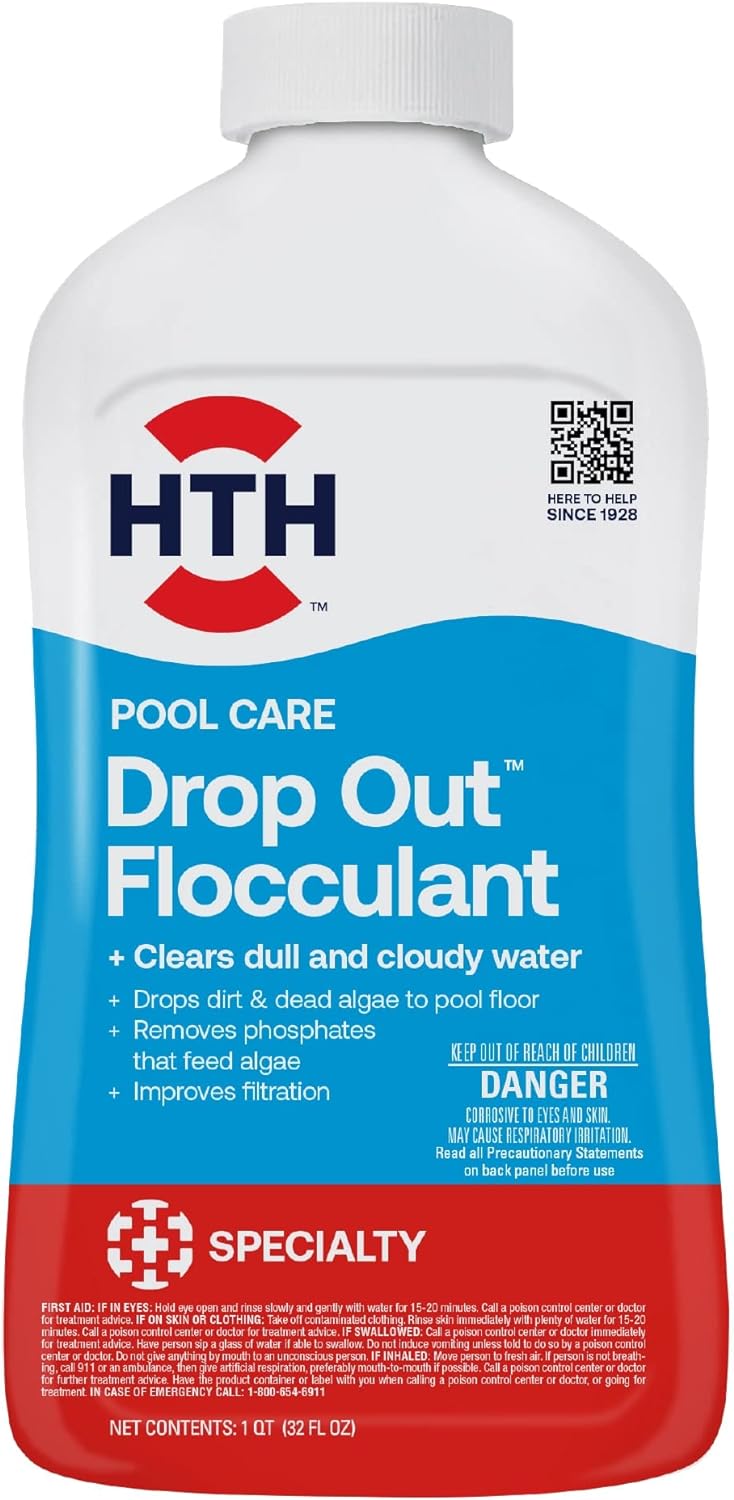
Clarifier vs. Flocculant: Understanding Their Role in Pool Maintenance
Clear, sparkling pool water is not only aesthetically pleasing but also essential for a safe and enjoyable swimming experience. To achieve pristine water clarity, pool owners often turn to chemical additives such as clarifiers and flocculants. In this blog post, we’ll explore the differences between clarifiers and flocculants, how they work, and when to use them in pool maintenance routines.
Clarifier: Enhancing Water Clarity
Clarifiers are chemical additives designed to improve water clarity by coagulating small particles suspended in the pool water. These particles, including dirt, debris, and microscopic algae, are often too small to be captured by the pool’s filtration system and can contribute to cloudy or dull water. Clarifiers work by causing these tiny particles to clump together, forming larger aggregates that are easier for the filter to trap and remove.
How Clarifiers Work:
- Dispersing Agent: Clarifiers contain a dispersing agent that helps evenly distribute the chemical throughout the pool water.
- Coagulation: Once dispersed, the clarifier attracts and binds to suspended particles, causing them to clump together.
- Filtration: The larger particle aggregates formed by the clarifier are captured by the pool’s filter, resulting in clearer water.
When to Use Clarifiers:
- Use clarifiers when pool water appears cloudy or dull due to the presence of fine particles that cannot be effectively filtered out.
- Clarifiers are especially helpful after heavy pool usage, following a storm, or during periods of high pollen or debris accumulation.
Flocculant: Settling Suspended Particles
Flocculants, often referred to as “floc,” are powerful chemical agents that work by causing suspended particles in the pool water to clump together and settle to the bottom of the pool. Unlike clarifiers, which form larger particle aggregates that are captured by the filter, flocculants create visible clumps that can be vacuumed or manually removed from the pool.

How Flocculants Work:
- Aggregation: Flocculants bind to suspended particles in the water, causing them to aggregate and form visible clumps.
- Settling: The heavy clumps created by the flocculant quickly settle to the bottom of the pool, taking the suspended particles with them.
- Removal: Once settled, the particles can be removed from the pool by vacuuming the pool floor or manually scooping them out.
When to Use Flocculants:
- Flocculants are best used when pool water is excessively cloudy or turbid, indicating a high concentration of suspended particles.
- Use flocculants as a last resort when other methods, such as filtration and clarifiers, have failed to improve water clarity.
Conclusion:
Clarifiers and flocculants are valuable tools in the pool owner’s arsenal for achieving and maintaining clear, sparkling water. While clarifiers work by coagulating small particles to improve filtration efficiency, flocculants cause suspended particles to settle to the bottom of the pool for easy removal. By understanding the differences between clarifiers and flocculants and knowing when to use each product, pool owners can effectively combat cloudy water and enjoy a pristine swimming environment all season long. Remember to follow manufacturer instructions and proper dosing guidelines when using clarifiers and flocculants to ensure safe and effective results.




